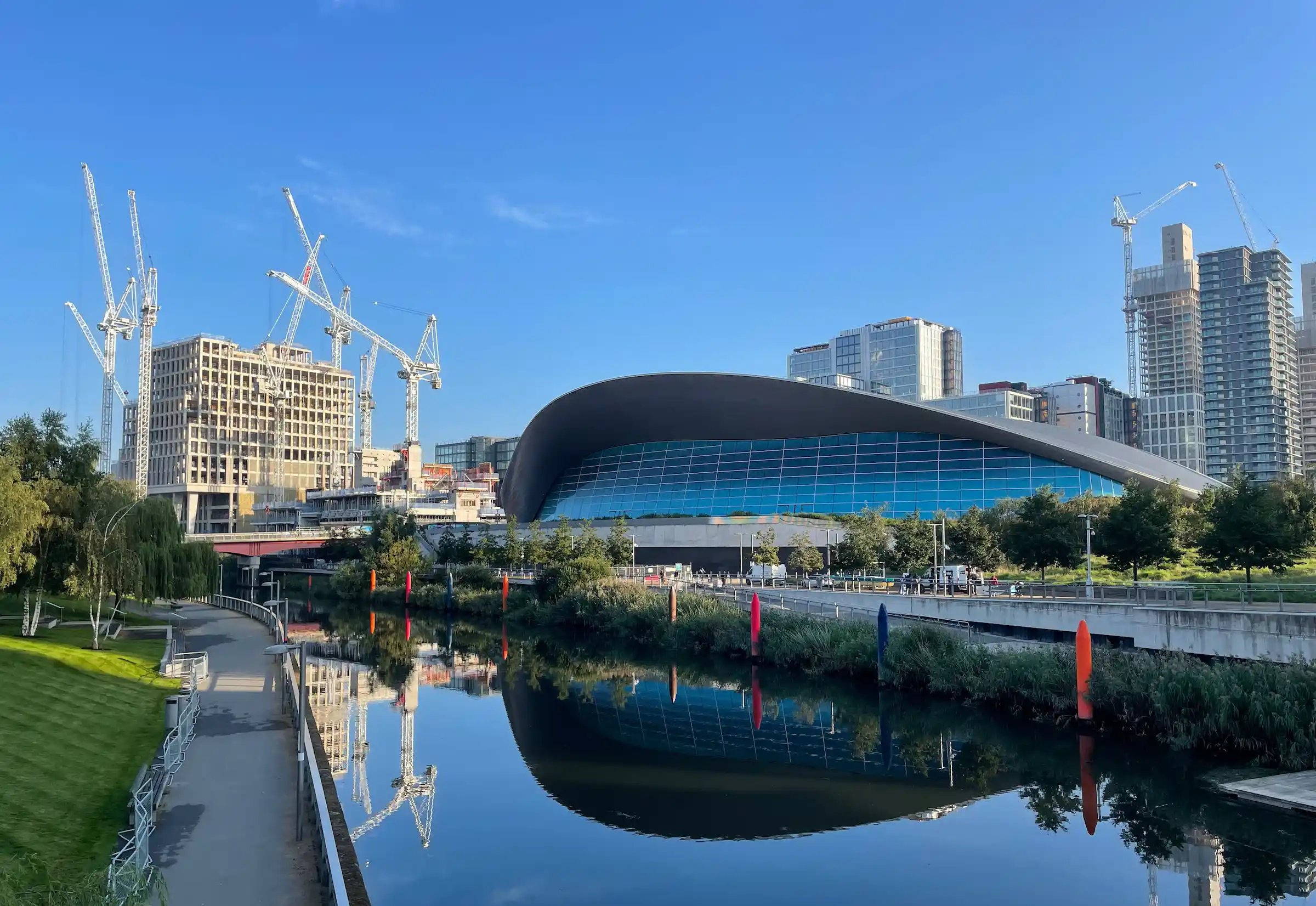Brickflow Guide to Air Rights
Air rights unlock valuable development space. We explain what they are and their restrictions, plus share lender feedback and answer FAQs.
.jpg)
Build to rent or B2R is now a decade old and continues growing in popularity with investors, property developers and tenants. It delivers regular cash-flow from long-term lets, and tenants welcome the rent stability, central locations and services these developments offer.
What is build to rent?
Build to rent is seen as a solution to Britain’s housing crisis as homes can be quickly converted from commercial buildings that would otherwise stand idle, into often, high-spec property developments with gyms, concierge services and manicured open spaces.
The Queen Elizabeth Olympic Park in Stratford, East London, is one of the biggest build to rent locations in the city. Over 10,000 homes are already completed and two of five new neighbourhoods are under construction. By 2031, the London Legacy Development Corporation predicts there’ll be over 55,000 people living on and around the East Village location.

Get Living London manages and rents nearly 2,000 homes in the East Village and Triathlon Homes is responsible for nearly 1,400.
What’s the difference between build to rent and buy to let?
The major difference between build to rent and buy to let is how homes are owned.
With build to rent, companies build and retain ownership of large developments of purpose-built homes which they manage and benefit from the economies of scale. In buy to let, private owners and landlords tend to own a smaller number of properties that might be geographically dispersed.
The build to rent financial model lets developers recoup their costs from recurring long-term rents rather than property sales. Over time, low voids and stable income can create a premium for these which attracts the likes of institutional lenders like pension funds who prefer the certainty of regular returns.
Why is build to rent growing?
Since 2012, build to rent has taken off with backing from the government. Tax and regulatory changes have contributed to a growth in this sector, reducing investment in buy to let properties.
Landlords have lost the benefit of higher rate tax relief on mortgage finance, while stamp duty and capital gains tax on purchases and sales of investment properties have created additional surcharges. Higher energy efficiency standards and the banning of up-front fees for starting or renewing a tenancy means the buy to let option is less profitable for private landlords. Build to rent also allows investors to avoid paying the SDLT 3% surcharge charged to landlords on new build stock.
'Savills predict rental growth will outpace house price inflation'
During the first six months of 2022, Savills reports around £2.5billion was invested in the build to rent market, with investors buoyed by rents and income growth recovering post-pandemic, strong rent collection and renewals and a decrease in rental products, stimulating demand. Over the next five years, the firm predicts rental growth will outpace house price inflation.
The British Property Federation says the number of completed build to rent homes have increased by a fifth, 19%, in the past year, and with rental values returning to pre-pandemic levels, investors have peace of mind they’ll see returns from their long-term investments.
With £1.3trillion worth of housing stock in the private rental sector, perhaps achieving the 45% USA market share or 35% in Germany, is not a pipe-dream.
Build to rent figures
The British Property Federation issues a build to rent map every quarter, plotting build to rent schemes across the UK. Its Q2 2022 figures show:
Although build to rent numbers seem large, the 2020-2021 English Housing Survey reports the private rented sector accounted for 4.4m or 19% of households in England, unchanged from 2019-2020.
Rental figures are higher in London with 27% of households in the private rented sector, compared to 17% across the rest of England. There are an estimated 24 million households in England. The proportion of households in the social rented sector – 4million or 17% - has not changed for more than a decade.
Resolving issues
In its 2019 Homeowner Survey, covering six years of trends, the Homeowners Alliance found one in six renters have short-term leases of six months or a year, one in six grumbled about unfair rent increases and nearly 40% felt landlords took too long to carry out repairs.
The Alliance says build to rent can resolve some of these issues by offering tenancies of three years or longer, planned rent rises, homes designed to meet the specific needs of tenants and more efficient property management.
The survey also reports 40% of tenants preferred build to rent over dealing with a private landlord or letting agent, while a third said their homes had better safety and energy efficiency than buy to let properties.
A drawback is tenants pay higher rents to build to rent landlords – getting on for 10% more than their buy to let counterparts. This can make saving to buy a home harder for renters.
Who lives in build to rent?
In analysis of build to rent occupancy in London, the British Property Federation in partnership with London First and the UK Apartment Association, found:

Developing a build to rent project
Developing a build to rent project starts with scrutinising data and working out where there’s a need for the development and how it can support tenants in the neighbourhood. While it’s obvious, location is key; build to rent is a service so it’s important the infrastructure is in place to serve the community (public sector bodies and transport providers can support build to rent applications).
Many local authorities have specialist teams tasked to ease the way for build to rent schemes offering the right mix of homes for the area, in the right location and with a sense of community.
Consider operational efficiencies – smaller schemes are less efficient and it’s important to be able to offer a mixed tenure, with perhaps retail space mixed in with other commercial ventures. Planners will lay down conditions, like the amount of affordable rental homes that should be made available – generally around 20% of the project.
Hybrid working is now the norm, so the offer of a range of facilities will be a huge draw for potential tenants. Is a pool or gym likely to be a top priority for people in the area? Developers must show homes will reach a high spec, are energy efficient, come under unified ownership and management and offer long-term rentals.
In addition to front of house facilities, think what’s happening behind the scenes; delivery storage, rubbish, recycling, loading bays etc, all a consideration. Equally, tenants will have differing budgets so a mix of layouts suiting varying rental requirements is a must. Modular construction methods lend themselves well to this and enable residents to personalise their space.
Last but not least - build to rent also means a commitment to managing renters and the development after the building finishes.

How can I finance a build to rent project?
Brickflow is a digital marketplace for development finance and bridging loans, connecting brokers with lenders online, to secure smarter funding for their clients. Applying for a development loan through Brickflow means borrowers can:
Brickflow searches more than 80 lenders in minutes and borrowers can complete their loans in as little as six weeks. Platform AI instantly selects lenders likely to make a loan offer, resulting in a 90+% conversion rate from Heads of Terms to completion
Build to Rent FAQ's
Build to rent is set to play a major role in the private rented sector in the same way student living developed into a multi-billion market from almost a standing start a decade ago.
For anyone unfamiliar with build to rent, here are some commonly asked questions:
How big does a build to rent development have to be?
There are no fixed rules, but the Greater London Authority suggests a build to rent development should comprise at least 50 self-contained units with unified ownership and management
Does the government offer build to rent financial support?
The government-backed Home Building Fund supports small builders with development loans from £250,000. Developers typically borrow between £2 - £5million.
Is co-living part of build to rent?
Co-living is when people have a lifestyle that shares space or values and is often applied to build to rent. Build to rent offers shared, communal spaces like gyms, laundries, games rooms, restaurants and gardens. The concept is to build a community within a build to rent development.
Architects and designers often focus on co-living in build to rent neighbourhoods, while management companies promote the idea as a positive lifestyle choice for tenants.
How can I find a build to rent project?
Build to rent is data-driven and provides solutions to local needs. The first step is to find an area and pinpoint the housing need to the right demographic. With proof of need and a solid idea of the likely demand for homes, the project should be able to proceed.
At Brickflow, we’ve partnered with site-finding platform Nimbus to give developers seamless and fast access to property opportunities and funding. Nimbus shares planning information and data with investors, developers and property professionals, helping them make informed decisions about a site’s viability.
Once Nimbus clients have identified the sites they’re keen to develop, prior to their projects progressing, they can move seamlessly through to Brickflow and access a range of funding options.
The whole process, from sourcing planning reports and data to funding, takes days rather than weeks and months, saving all parties time, effort and money.
Where are build to rent projects located?
Around half of build to rent developments are in and around London. The rest are mostly in urban areas like Birmingham, Manchester and Leeds.
A typical build to rent development is an apartment block with bolt-on services like a concierge, on-site management and other amenities. Check out the British Property Federation build to rent map.
Brickflow is designed to be used by experienced finance & property professionals and property developers using Limited Companies or Incorporated Partnerships, to source and apply for development finance loans.
Brickflow is not an advisory business and does not give advice. It can deal with purely factual inquiries and provide information but it will not give an opinion or recommendation in any circumstances.
Property development carries risk, including variables beyond the developer’s control. A property development loan is debt and should be procured with caution.
Brickflow does not provide personal mortgages, but your home and other assets are at risk if you provide a personal guarantee for a corporate loan.
If you're looking for more information on Build to Rent or development finance more generally, for yourself or your clients, please get in touch - info@brickflow.com.
Air rights unlock valuable development space. We explain what they are and their restrictions, plus share lender feedback and answer FAQs.
The points brokers & property developers need to cover to help ensure that when a lender has 25 new enquiries in their inbox, yours is the first they...
We explain how to fund a permitted development project, the options available and latest legislation. We also share our experience & lender insights.